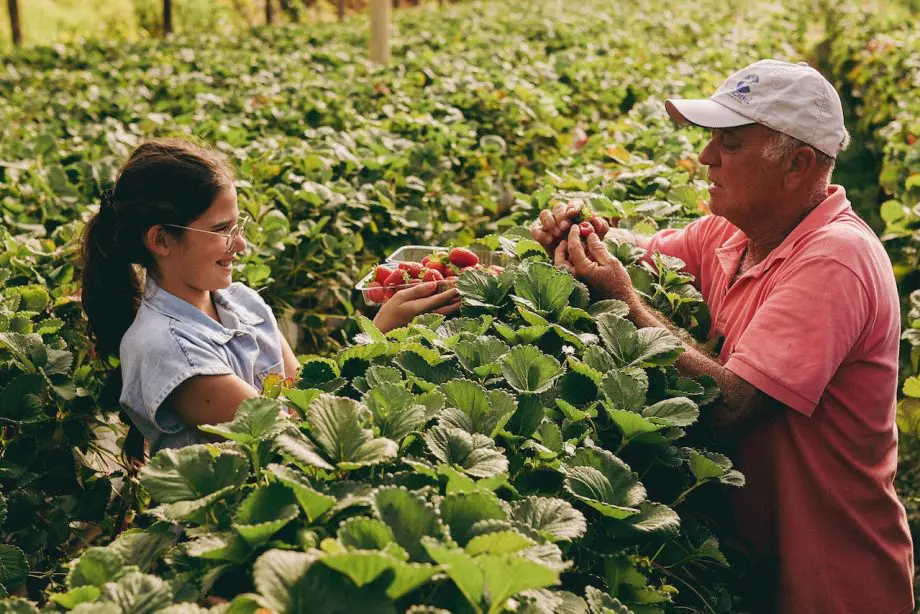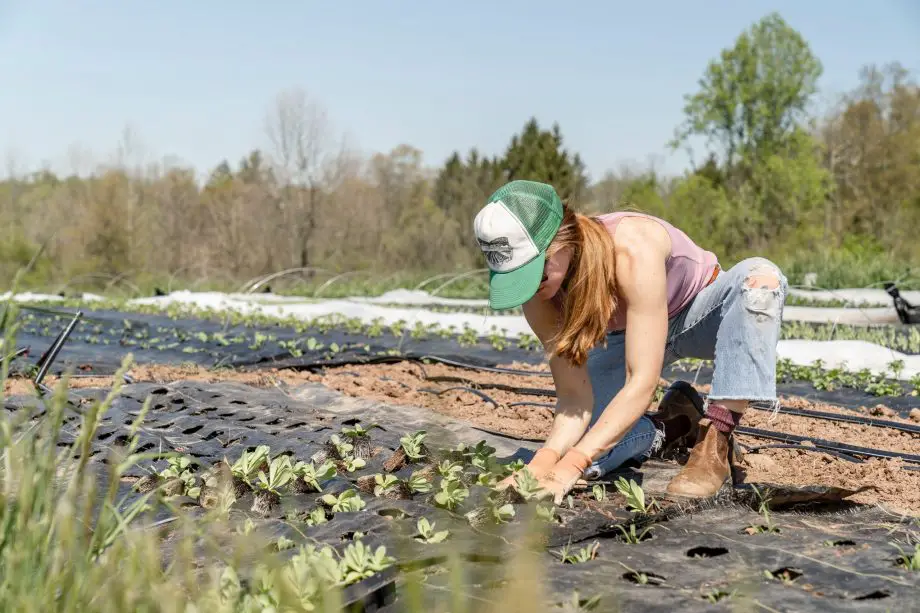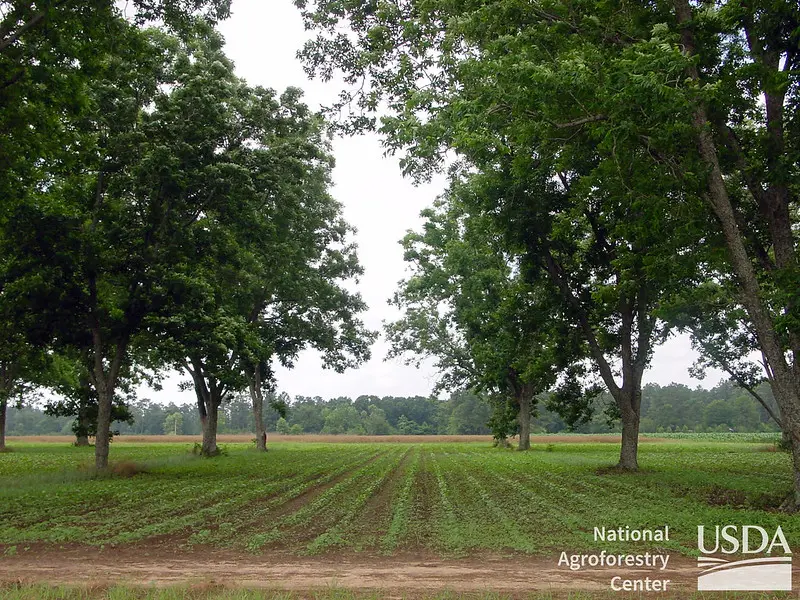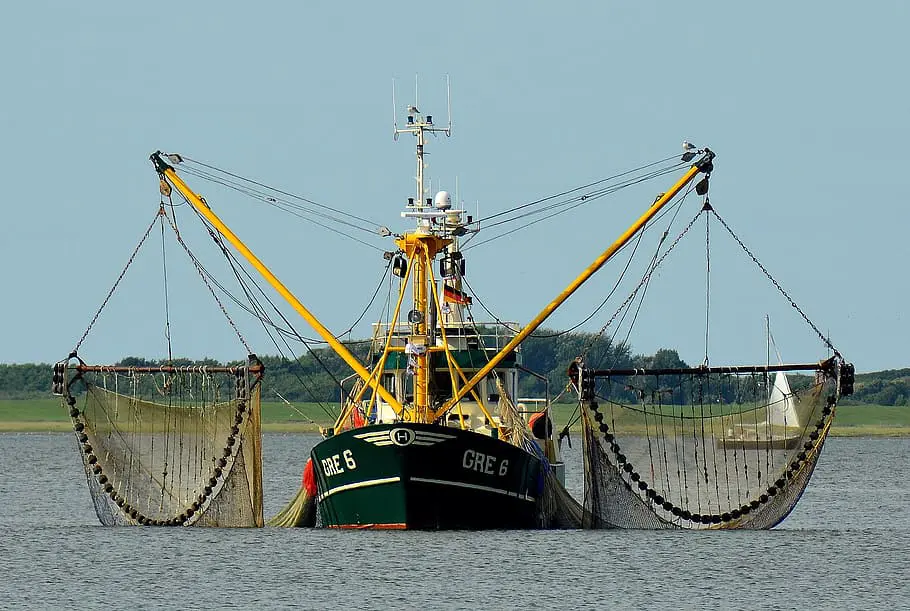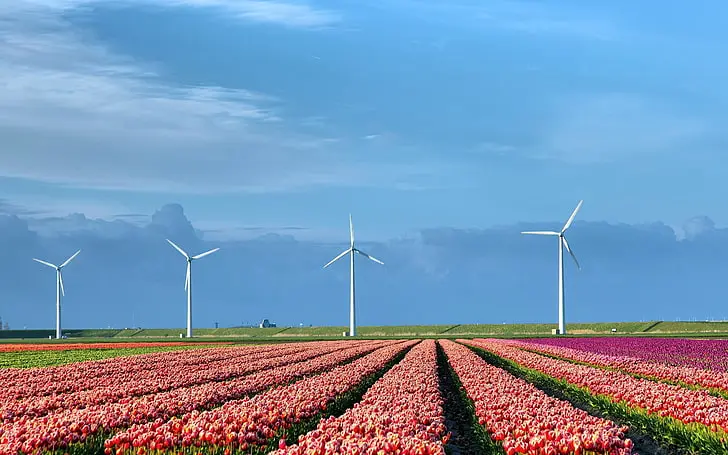
Discover the world of sustainable agriculture and how it shapes our future. Learn about its principles, techniques, and impact on the environment and society in a friendly guide.
Sustainable agriculture isn’t just a buzzword—it’s a way of reconnecting with our roots, while looking forward to a greener future.
Think of it like combining the wisdom of our grandparents with today’s innovations.
Curious about how this blend is reshaping the way we grow our food? Stick around, and let’s explore this captivating world together.
Introduction to Sustainable Agriculture
Navigating the landscape of sustainable agriculture can feel like unearthing buried treasure.
With every scoop, there’s a new revelation, from its age-old practices to the cutting-edge innovations of today.
In this introduction, we’ll set the stage, laying out the myriad topics we’ll uncover everything from soil health and water conservation to the ins and outs of crop rotation.
So, grab your metaphorical spade; we’re about to dig deep!
Definition and Significance of Sustainable Agriculture
When we talk about sustainable agriculture, we’re referring to an approach that strikes a balance between the need for food production and the preservation of our environmental and social systems.
Imagine a see-saw; on one side, you have bountiful crops, and on the other, a vibrant, thriving ecosystem.
Sustainable agriculture ensures that this see-saw remains in harmony. Now, you might be wondering, why does this even matter?
Well, our current global challenges, such as climate change, water scarcity, and food insecurity, demand solutions that sustainable agriculture offers.
By adopting these practices, farmers not only ensure a productive yield but also hand over a healthier planet to future generations.
Historical Background and Modern Trends
Journeying back in time, our ancestors relied heavily on sustainable methods, mostly out of necessity.
Without today’s technological advances, they embraced practices like crop rotation, organic fertilizers, and natural pest management to maintain fertile lands.
Fast forward to the 20th century, and the rise of industrial agriculture led to high yields but also brought along environmental issues and dependence on non-renewable resources.
Recently, there’s been a beautiful blend of the past and present.
Modern trends in sustainable agriculture lean into technological advancements, from precision farming to digital soil mapping, while still honoring age-old practices.
The dance between tradition and innovation is painting a hopeful picture for the future of farming.
Principles of Sustainable Agriculture
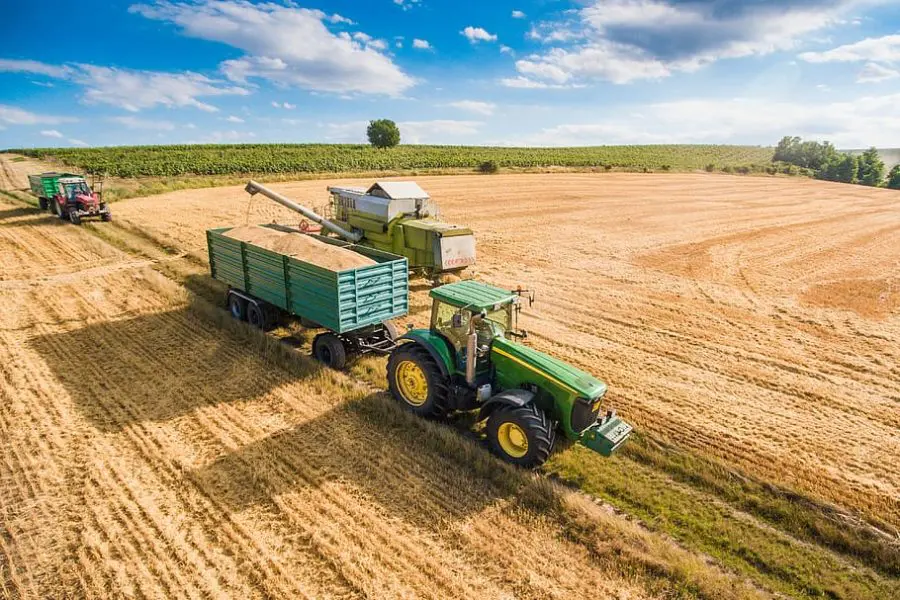
At the heart of sustainable agriculture are principles that guide its practice, much like how a compass leads an explorer to their destination.
It’s not just about growing crops and raising livestock. It’s about doing so in a way that’s in harmony with our environment, our communities, and our future.
But what exactly are these principles? And how do they shape the decisions made on a farm?
As we delve into this section, we’ll unpack these guiding stars, giving you a clear picture of the philosophy that fuels sustainable agriculture.
Let’s dive in and unravel the core beliefs that make this approach so unique and crucial in today’s world!
Overview of Core Principles
Sustainable agriculture, while sounding technical, really boils down to a few core principles.
Picture these as the foundation stones of a house, keeping the entire structure sturdy and grounded.
Ecosystem Health: This principle emphasizes working with nature rather than against it.
It’s about fostering biodiversity, improving soil health, and maintaining a balance.
It’s kind of like ensuring all the plants in a garden get along, helping each other flourish.
Economic Profitability: Sustainable doesn’t mean unprofitable.
The idea is to ensure that farmers and all involved in the agricultural chain have a livelihood that’s viable long-term.
Think of it as making sure the bakery down the street keeps its doors open, serving those delicious pastries year after year.
Social and Economic Equity: This ensures that everyone in the farming process, from the farm workers to the consumers, gets a fair deal.
Imagine a pie, where each person gets an equal slice, ensuring no one goes home hungry.
Resource Conservation: Using resources judiciously is a big one! It’s about treating water, soil, and energy like the treasures they are, ensuring they last for generations to come.
It’s kind of like using a family heirloom—you treasure it, take care of it, and pass it on.
Ethical Considerations in Sustainable Practices
Ethics in sustainable agriculture isn’t just a footnote and it’s a central chapter. It’s about ensuring the right thing is done, even when no one’s watching.
Animal Welfare: This isn’t just about not being cruel; it’s about ensuring animals lead fulfilling lives.
Think of it as making sure your pet has more than just food and water, but also toys, affection, and space to run around.
Fair Treatment of Workers: Sustainable farming acknowledges the hands that till the land.
This involves fair wages, safe working conditions, and respect. Picture it like ensuring every worker at a carnival is appreciated, not just the ones in the spotlight.
Honesty in Marketing: Transparency with consumers is paramount. This means honest labeling and marketing practices, so consumers know exactly what they’re getting.
It’s a bit like a trusted friend who tells it like it is, without any sugar-coating.
Respect for Local Communities: Sustainable practices ensure that farming doesn’t harm local communities, be it through water usage, pesticide drift, or any other means.
It’s about being a good neighbor, respecting boundaries, and living harmoniously.
In essence, the ethical considerations in sustainable agriculture weave a fabric of trust, respect, and care, ensuring a holistic approach that benefits all.
Soil Health and Management
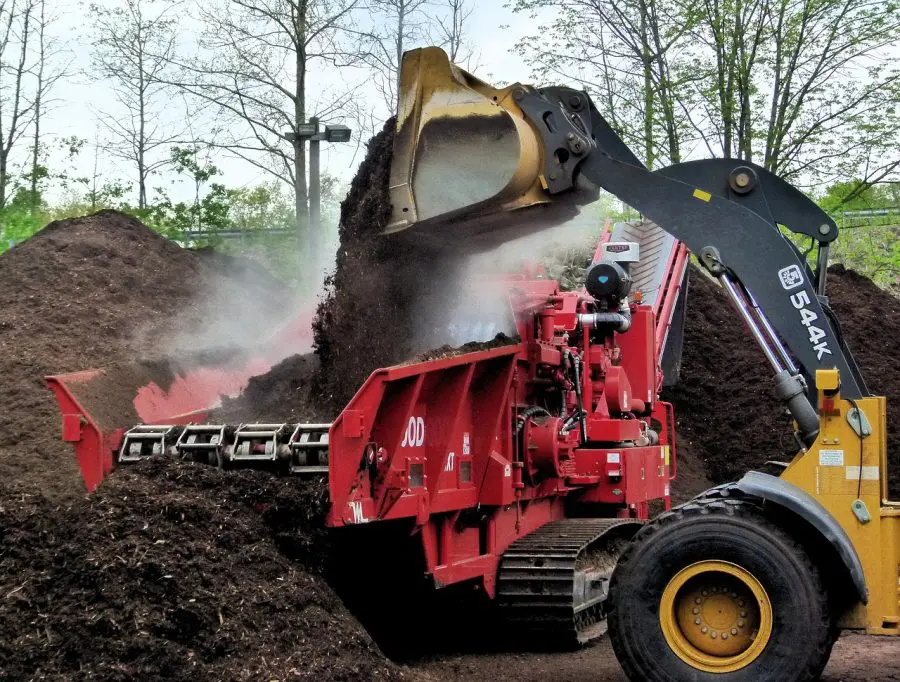
When you think of the most valuable treasures on Earth, gold and diamonds might come to mind.
But let’s talk about another unsung hero: soil. It’s the silent supporter beneath our feet, playing a pivotal role in our ecosystem.
In our journey through sustainable agriculture, the topic of Soil Health and Management shines a spotlight on this vital resource.
In this section, we’ll dig deep (pun intended!) into the practices that keep our soils healthy and thriving.
After all, a good foundation is the key to any successful venture, and what better foundation than the very ground that nurtures our crops?
Let’s get our hands a little dirty and explore the world of soil!
Techniques for Soil Preservation
You know, the soil isn’t just dirt. It’s a bustling microcosm of life, teeming with organisms and packed with nutrients that plants need to grow.
And just like any precious resource, it’s crucial to keep it in tip-top shape. So, how can farmers ensure their soil remains healthy for years to come?
Cover Cropping: Picture this. Instead of leaving soil exposed between planting seasons, farmers plant specific crops that shield the soil from the elements.
These crops, called cover crops, aren’t grown for harvest but to protect and nourish the soil.
They prevent erosion, improve soil structure, and even suppress pesky weeds. It’s like giving soil a cozy blanket during its off time.
Conservation Tillage: Tilling the soil can sometimes feel like a double-edged sword.
While it can help in preparing the land for planting, excessive tilling breaks up the structure of the soil, making it susceptible to erosion.
Enter conservation tillage, a method where farmers limit their tilling activity, allowing crop residues to remain on the field and act as a protective barrier.
Crop Rotation: Think of this as giving the soil a vacation.
By rotating different crops on the same land, farmers can prevent the build-up of pests and diseases and also ensure the soil isn’t repeatedly sapped of the same nutrients.
It’s like a well-planned dietary rotation for the ground.
Organic Matter and Nutrient Management
We’ve all heard the saying, You are what you eat. Well, plants aren’t too different!
The quality of crops largely depends on the nutrients they soak up from the soil.
And maintaining the right balance of these nutrients is an art in itself.
Composting: Imagine turning kitchen waste, leaves, and plant clippings into gold for plants. That’s composting for you!
It’s a natural process where organic materials decompose into a rich, dark, soil-like substance.
When added to soil, compost enhances its texture and provides a buffet of nutrients for plants.
Green Manure: No, it’s not actually green or manure in the traditional sense.
Green manure refers to certain plants, like legumes, that are grown and then turned back into the soil to decompose.
As they break down, they release valuable nutrients back into the ground, making it richer and more fertile.
Soil Testing: It’s like an annual health check-up but for the soil.
Periodic soil testing lets farmers know the nutrient levels in their fields.
With these insights, they can add just the right amount of organic or natural fertilizers to ensure crops get a balanced diet.
By implementing these techniques, farmers are not just preserving the soil for the next season but ensuring it remains a fertile powerhouse for generations to come.
After all, when we take care of the soil, the soil takes care of us. It’s a beautiful, symbiotic relationship.
Water Conservation in Agriculture

Diving into the world of agriculture, it’s crystal clear that water is the lifeblood of every farm.
But with changing climates and unpredictable rainfall patterns, every drop counts more than ever.
In our next section, Water Conservation in Agriculture, we’ll journey through the innovative ways farmers are making waves in conserving this precious resource.
From ancient techniques making a comeback to futuristic innovations, we’re about to splash into the heart of sustainable farming’s most pressing challenge. Ready to ride the wave with us?
Water-Saving Irrigation Strategies
Ah, the art of quenching the thirst of our crops without wasting a drop!
With populations growing and water resources shrinking, it’s like a game of chess, where every move matters. Here’s how we’re mastering the moves:
Drip Irrigation: Imagine watering your plants with a straw, directly targeting their roots.
That’s the idea behind drip irrigation. It delivers water straight to the plant’s root zone, minimizing evaporation and maximizing the effectiveness of every droplet.
Rainwater Harvesting: It’s like collecting memories in a jar, but instead, we’re catching raindrops.
By setting up systems to collect and store rainwater, farmers can tap into this free source of water during dry spells.
Soil Moisture Monitors: These are the unsung heroes in the background.
Like a weather forecaster for the soil, these gadgets notify farmers precisely when the plants are thirsty.
This way, not a drop is wasted, and plants get a drink only when they’re parched.
Managing Water Quality and Watershed Health
Clean water isn’t just a luxury it’s a necessity. Especially when we’re talking about what goes into our food.
So, how do we ensure that this life-giving resource stays pure and healthy?
Natural Buffer Zones: Think of these as nature’s own water filters.
By planting trees and grasses around water sources, we create a natural barrier that filters out sediments and pollutants. It’s like giving nature a sponge to do the cleaning.
Reducing Runoff: Using cover crops and no-till farming methods, we can reduce the amount of water that runs off fields, carrying with it soil and potential pollutants.
The result? Cleaner water and healthier soil.
Regular Water Testing: It’s like a routine check-up but for our water sources.
By frequently testing water for contaminants, farmers can catch any issues early on and ensure they’re providing the best for both crops and consumers.
Remember, by taking care of our water, we’re not just supporting sustainable agriculture, but also nurturing a healthier planet for future generations. Every drop truly does count!
Crop Diversity and Rotation
Dipping our toes into the vast world of farming, have you ever thought of it as a grand buffet?
Instead of serving the same dish over and over, imagine offering a variety of delicious options.
That’s what crop diversity and rotation are all about. By mixing up what’s grown in the fields, not only do we keep the soil invigorated, but we also stay one step ahead of pests and diseases.
Dive in as we explore the colorful palette of crops and the rhythmic dance of rotation that keeps our agriculture thriving and our plates full of flavors.
Benefits of Diverse Crop Selection
Imagine you’re a chef. Now, if you had to whip up something delicious, would you prefer a pantry stocked with a single ingredient or a medley of vibrant, diverse options?
Just like in the kitchen, diverse crop selection in farming offers a bounty of benefits:
Nutrient Balance: Different crops have varied nutrient needs. By diversifying, we ensure the soil isn’t drained of one specific nutrient.
Think of it like rotating between a spaghetti night and a taco Tuesday. Different dishes, different ingredients, and a balanced diet!
Disease Resistance: Relying on a single crop type can spell disaster if a disease targeting that specific crop emerges.
A diverse selection, on the other hand, can act as a buffer, reducing the overall impact.
Pest Control: Pests can be picky eaters. By rotating crops, we can throw them off their dining routine.
They might love feasting on potato plants, but if the next season brings a field of barley, those pests are out of luck.
Enhanced Soil Health: Different crops contribute to and take from the soil in their unique ways.
By mixing it up, we keep the soil lively and dynamic, kind of like keeping the dance floor exciting with a mix of tunes.
Economic Stability: A diverse crop selection can be a safety net for farmers.
If one crop fails or market prices drop, they have others to fall back on. It’s a bit like not putting all your eggs in one basket—literally!
Implementing Effective Crop Rotation
Now, crop rotation isn’t just about switching things up willy-nilly. It’s a strategic shuffle, and when done right, it’s like a well-orchestrated dance.
Understanding Soil Needs: The first step is understanding what each crop takes from and gives back to the soil.
For instance, legumes (like beans) can fix nitrogen from the air, benefiting crops that come after them.
Sequencing Matters: It’s not just about variety but also the order.
For instance, planting a heavy feeder like corn after nitrogen-fixing beans can make the most of the nutrients the beans left behind.
Record Keeping: Keep a farming diary. Track what’s planted where and when.
Over time, this helps in understanding patterns, successes, and areas of improvement.
Adjusting with Time: The best crop rotation plan is one that evolves.
As we understand more about the soil, pests, and local conditions, tweaking the rotation sequence can lead to even better yields.
Support with Technology: Nowadays, there are handy apps and tools to guide farmers on optimal crop rotation based on real-time data. It’s like having a farming buddy right in your pocket!
In essence, crop diversity and rotation are about keeping things fresh, dynamic, and in balance.
It’s not just about the crops themselves, but the dance between them, the soil, and the environment.
And when they all move in harmony, the results are truly bountiful!
Integrated Pest Management (IPM)
Ever found yourself in a tug-of-war with pests in your garden, wishing there was a way to keep those critters at bay without going overboard on the chemicals?
Enter Integrated Pest Management (IPM), a smarter, more sustainable approach to handling pests in agriculture.
This section will dive into the nitty-gritty of IPM, its innovative strategies, and how it strikes that perfect balance between safeguarding our crops and caring for our environment.
Let’s unravel the magic behind this method together!
Non-Chemical Pest Control Methods
Alright, let’s have a chat about these non-chemical methods to keep pests in check.
Going chemical-free? It sounds almost too good to be true, but with some strategic moves, it’s entirely possible.
Biological Control: Here, we’re talking about introducing natural enemies of the pests into the environment.
Think of it as letting Mother Nature do its thing. For example, ladybugs can be a gardener’s best friend as they love munching on aphids!
Physical Barriers: Simple barriers can work wonders. Netting can protect fruit trees from birds, while row covers can shield plants from insects. It’s like giving your plants their personal bodyguard.
Cultural Practices: This is all about being a step ahead of the pests. Crop rotation, proper spacing, and timed planting can disrupt the life cycle of pests. It’s a sneaky but effective tactic!
Pest Monitoring and Thresholds
Now, onto our next big topic: keeping an eye out for those pesky invaders and knowing when to take action.
Regular Monitoring: Keeping a close watch is crucial. This means regularly inspecting crops, setting up traps, or even using pheromone lures to get an idea of what pests are lurking around.
It’s like setting up surveillance cameras but for your crops.
Understanding Thresholds: Not every pest sighting means it’s time for action. There’s a concept called the economic threshold in IPM.
This refers to the point where the cost of pest damage would be more than the cost of controlling them.
So, if pests haven’t reached this number, you can chill a bit. Think of it as waiting for that cup to be just about to overflow before emptying it.
In essence, IPM isn’t about waging war against pests; it’s about understanding them, monitoring their moves, and acting strategically.
It’s a smarter, nature-friendly approach that ensures both our crops and our planet stay healthy.
Livestock and Sustainable Farming
When we talk about farming, we can’t just focus on the plants, can we?
Let’s dive into the world of livestock those clucking chickens, mooing cows, and bleating sheep that play a pivotal role in the symphony of agriculture.
You might be wondering, How do these animals fit into the grand scheme of sustainable farming?
Well, buckle up, because in this section, we’ll explore the harmonious dance of livestock and sustainability, showing that with the right steps, animals can not only be part of the agricultural landscape but can elevate it to new sustainable heights!
Ethical Treatment of Farm Animals
You know, it’s fascinating how our society has grown more conscious about the products we consume.
From what’s in our food to where our clothes come from, there’s a shift toward transparency.
But when it comes to our four-legged (or two-legged!) farm friends, it’s more than just about transparency; it’s about empathy and ethics.
Understanding the importance of ethically treating farm animals means recognizing their right to a decent life.
It’s more than just free-range or organic labels; it’s about ensuring that the animals lead a life with minimal pain, distress, or discomfort.
This includes spacious habitats, appropriate veterinary care, natural diets, and an environment that allows them to exhibit natural behaviors.
Treating animals with respect isn’t just good karma; it also often results in better-quality meat, eggs, or dairy products.
Healthy and happy animals are truly a win-win for both the consumer and the farmer.
Mixed Farming Systems for Sustainability
Now, let’s shift gears a bit and talk about something that’s both old-school and revolutionary: mixed farming systems.
It’s like that classic song that gets a modern remix. At its core, mixed farming is the practice of cultivating crops and rearing animals side by side, on the same land.
This approach provides multiple benefits:
Waste Recycling: Picture this: the crop residues feed the livestock, and the livestock manure nourishes the soil. It’s nature’s way of recycling!
Soil Health: Animals, especially free-ranging ones, can help in pest control (chickens love to snack on insects!) and soil aeration (ever seen how pigs love to root around?). Their activities can enrich the soil, making it more fertile.
Diversified Income: By having both crops and livestock, farmers can diversify their income sources. If one fails due to unexpected conditions, the other might still thrive.
Balance in the Ecosystem: Having both plants and animals can create a balanced ecosystem, attracting beneficial insects and birds while keeping potential pests in check.
When done right, mixed farming systems can be like a well-conducted orchestra, with each member playing their part to create a harmonious, sustainable symphony of agriculture.
Organic Farming Practices
Dipping our toes into the world of farming, have you ever stumbled upon the term organic and wondered what all the buzz is about?
Let’s embark on a journey together into the verdant fields of organic farming practices.
From farm-fresh tomatoes that burst with flavor to crops nurtured without synthetic interventions, this section is all about understanding the heart and soul of organic agriculture.
So, roll up your sleeves and let’s dig a little deeper into what makes organic farming both an art and a science!
Organic Certification Process
Alright, let’s get this straight. Organic doesn’t just mean something was grown without synthetic chemicals.
There’s a whole rigorous process behind that certified organic label you spot on your favorite apples or spinach.
Step 1: Choosing Organic from the Get-go
Farmers don’t wake up one day and decide, Hey, let’s go organic today! They need to commit from the beginning.
This involves using seeds that haven’t been treated with synthetic chemicals and ensuring their soil has been free from prohibited substances for at least three years.
Step 2: Detailed Documentation
Like a meticulous diarykeeper, farmers need to maintain extensive records about their crops.
This includes everything from the types of seeds used, and farming practices, to the products applied to the soil.
Step 3: Inspection Time!
It’s like the farm’s annual check-up. An independent agent visits the farm to ensure all organic standards are being met.
They’ll inspect fields, study records, and even take soil and water samples occasionally.
Step 4: The Review
After the inspection, there’s a review process. If everything checks out, the farm earns its organic certification.
But it’s not a one-time deal; these inspections happen annually to ensure continued adherence.
Market Trends and Consumer Preference
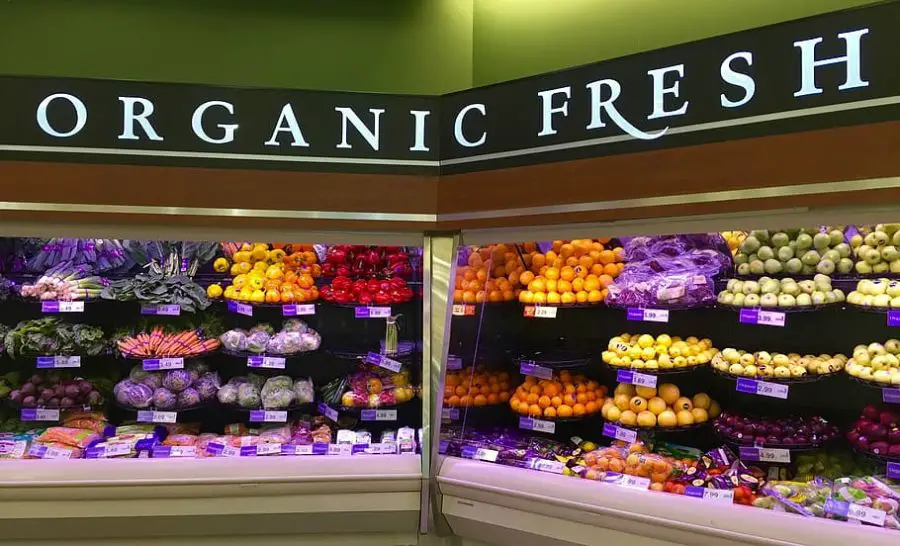
Now, diving into the world of consumers (that’s us!), organic products have grown from being those fancy items at the supermarket to a lifestyle choice for many.
The Popularity Parade:
Over the past decade, organic food sales have skyrocketed. The reasons?
Well, increased awareness about health, environment, and food safety.
Not to forget, the taste! Many believe organic products taste more real.
The Millennial Influence:
Did you know millennials are driving the organic market trend? With their purchasing power, they’re championing for sustainable and healthier choices.
Their love for organic isn’t just about health; it’s tied to concerns about the environment and sustainable farming practices.
Organic Goes Mainstream:
Gone are the days when organic food was limited to specialized health stores.
From big supermarket chains to local mom-and-pop stores, organic products have found their way onto every shelf.
Some restaurants even boast of an all-organic menu!
Price Dynamics:
While organic products often come with a heftier price tag due to labor-intensive practices and certification processes, consumers are more willing than ever to pay a premium for the perceived health and environmental benefits.
In a nutshell, as our world evolves, so do our eating habits.
The swing towards organic reflects a collective desire for more natural, untainted, and healthful food choices.
And hey, if it’s tasty, that’s just the cherry (organically grown, of course!) on top.
Agroforestry and Permaculture
Imagine if trees and crops teamed up in a buddy-cop movie! Well, that’s not too far from reality when we talk about agroforestry and permaculture.
It’s like the power duo of farming, where trees play nice with crops and animals.
This approach goes beyond just farming; it’s about creating a balanced, sustainable ecosystem.
Dive in with us as we explore the magic of agroforestry and permaculture, where Mother Nature takes center stage in agriculture.
Introduction to Agroforestry Systems
You know how some of the best things in life come from unexpected pairings?
Think peanut butter and jelly or movies under the stars. Agroforestry is kind of like that a unique blend of agriculture and forestry.
At its core, agroforestry is the art of combining trees with crops or livestock in a single area.
Why? Because these companions work together in perfect harmony. Trees can offer shade, which some crops might prefer, while their deep roots can bring up nutrients from far below the surface, benefiting their plant neighbors.
Livestock, in turn, can help manage the undergrowth and provide natural fertilizers.
This system isn’t just good for the plants and animals involved it’s a win for us too!
It can lead to improved biodiversity, protection against erosion, and even potential income from timber or fruit trees.
All in all, agroforestry paints a picture of harmony, balance, and productivity.
Design Principles of Permaculture
Alright, let’s shift gears a bit to permaculture. Picture this: a garden where each plant has a purpose, working together like a well-oiled machine.
No plant is an island here. Instead, everything is interconnected, and the goal is to create a self-sustaining system that’s good for both nature and us.
It’s not just about planting, but about understanding relationships between different elements and making them work together seamlessly.
For example, planting nitrogen-fixing plants next to nitrogen-loving ones, or capturing rainwater for irrigation.
Let’s not forget the importance of bees in agriculture. From boosting crop yields to maintaining biodiversity, bees are the unsung heroes of our food system.
It’s like setting up a little nature party where everyone compliments each other!
The basic idea is to observe nature, understand its patterns, and mimic them.
By doing so, we can cultivate ecosystems that require minimal intervention, are sustainable, and are bountiful. It’s nature’s design at its best, with a little helping hand from us.
Greenhouse Farming and Controlled Environments
Ever dreamt of enjoying the perfect tomato in the middle of winter or having fresh, crunchy greens even when there’s a blanket of snow outside?
Welcome to the world of greenhouse farming and controlled environments!
Think of them as a bit like a VIP lounge for plants. Inside these protective spaces, plants get the ultimate star treatment: perfect temperature, the right amount of light, and protection from pests.
It’s like giving our green friends a chance to strut their stuff year-round, regardless of what Mother Nature has on her calendar.
Dive in with us as we peel back the curtain on this fascinating way of growing food, ensuring that we get the freshest produce, no matter the season.
Technology in Greenhouse Management
You know how we’re always in awe of those sci-fi movies where technology seems to weave seamlessly into every aspect of life?
Well, that future is here, especially in the realm of greenhouse management.
Greenhouses have long moved past being simple glass or plastic enclosures.
Nowadays, they’re buzzing with state-of-the-art tech gadgets, all aiming to give plants that optimal environment.
Think of automated watering systems that ensure each plant gets just the right amount of hydration, or sophisticated lighting arrangements that can mimic the sun’s movement and intensity.
We’ve even got sensors and algorithms predicting the best time to sow, water, and harvest.
It’s a tech lover’s dream and ensures that every plant is living its best life!
Energy Efficiency and Climate Control
Now, while it’s great that we can use technology to give our plants the star treatment, there’s another side to the coin.
We’ve got to make sure we’re not burning up too many resources in the process.
Enter the world of energy efficiency and climate control in greenhouses.
It’s all about getting the most bang for our buck and ensuring that our greenhouses aren’t guzzling energy.
From using energy-efficient materials that trap just the right amount of heat to installing solar panels and even recycling water, there are countless ways we’re fine-tuning the system.
And let’s not forget about climate control. With tech-driven ventilation systems and smart thermostats, we can keep the environment just right, ensuring our plants thrive without costing the Earth.
It’s a delicate balancing act, but with modern advancements, we’re getting closer to perfecting it every day.
Urban and Vertical Farming

Dive into the bustling city streets and skyscrapers, and you’ll find a surprising green oasis emerging.
Urban and vertical farming is reshaping the way we think about agriculture, right in the heart of our concrete jungles.
Ever imagined plucking fresh tomatoes from a garden on your rooftop, or grabbing some basil from a vertical farm inside a shopping mall?
Sounds a tad futuristic, but it’s happening now! This evolution is not just about food. It’s a blend of innovation, sustainability, and our undying love for fresh produce.
So, whether you’re a city dweller or just curious, come explore the wonders of urban and vertical farming with us.
It’s agriculture but with a metropolitan twist!
Opportunities for Urban Agriculture
Ever peered down from your apartment balcony and dreamt of a fresh green space below?
Urban agriculture is here to make that dream a reality. Let’s chat about some of the fantastic opportunities it brings:
Space Efficiency: One of the coolest things about urban farming is how it maximizes limited space.
Those empty rooftops, vacant lots, or even balconies can transform into green havens, producing everything from lettuce to strawberries.
Local Fresh Produce: No more wilted veggies from thousands of miles away!
Urban farming means fresh, local, and organic produce is just a hop, skip, and jump away.
Community Building: It’s more than just plants. Urban farming brings people together, promoting community interaction.
Neighbors bond over gardening tips, children learn where their food comes from, and the entire neighborhood thrives.
Environmental Boost: In a cityscape dominated by concrete, these green patches act as vital lungs.
They help reduce the urban heat island effect, capturing rainwater, and purifying the air.
Economic Opportunities: Think small-scale businesses.
From selling fresh produce at local markets or hosting farm-to-table dinners, urban farming can turn into a profitable venture.
Innovation in Vertical Farming Systems
Now, let’s take things up a notch, literally! Vertical farming is like the high-rise of agriculture. But what makes it tick? Let’s delve deeper:
Space Savers: Vertical farms are all about growing up instead of out.
Imagine several layers of crops stacked on top of each other, right inside a building. It’s perfect for areas where land is scarce.
Controlled Environment: These aren’t your average farms.
Inside, it’s a hi-tech environment where every aspect, from light to humidity, is controlled.
This ensures optimal growth conditions year-round, regardless of external weather.
Resource Efficiency: Vertical farms use up to 95% less water than traditional farming.
Thanks to a closed-loop system, water gets recycled continuously.
No Pests, No Pesticides: By being indoors, crops are protected from pests.
This means there’s little to no need for pesticides, ensuring you get cleaner, healthier produce.
Rapid Harvest Cycles: In these controlled environments, certain crops can be grown in half the time it usually takes.
This means more harvest cycles in a year and more food on the table.
So, whether it’s the allure of green spaces in urban settings or the futuristic charm of vertical systems, one thing’s clear.
The future of farming is not just in vast fields; it’s also in the heart of our buzzing cities!
Farm-to-Table and Local Food Systems
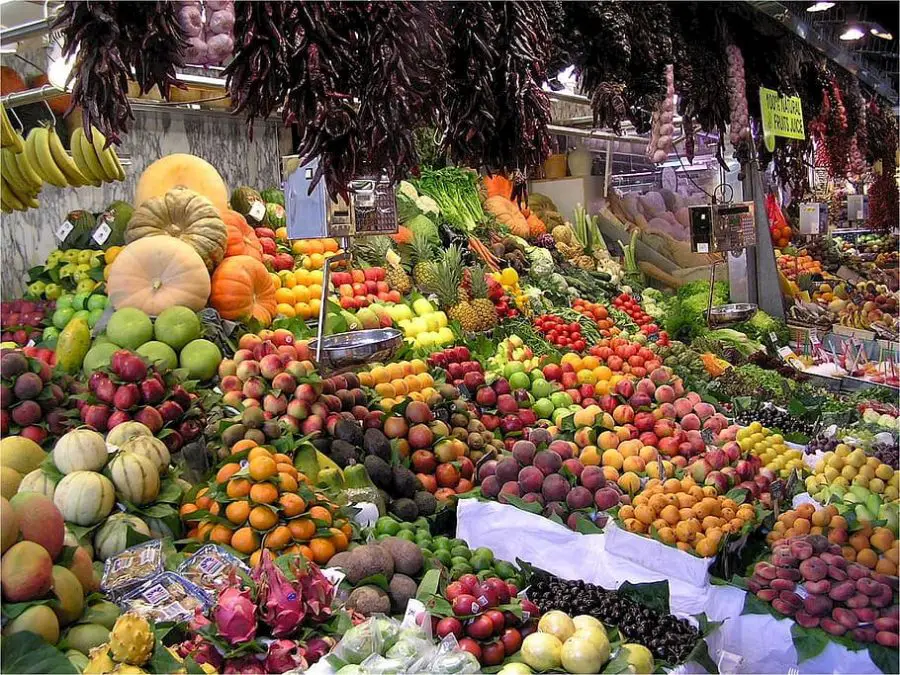
Ever sat down to a meal and wondered where exactly that juicy tomato or crispy lettuce came from?
Enter the farm-to-table movement and local food systems. It’s all about bringing the freshest produce straight from nearby farms right to your plate, ensuring flavors are at their peak and the journey from soil to supper is a short one.
Let’s dive into the beauty of eating local and celebrating every bite knowing its roots (quite literally!).
Building Community Through Local Food
Have you ever visited a local farmer’s market on a sunny morning? If you have, you’ve probably felt that vibrant community buzz.
When farmers and consumers meet face to face, it creates a sense of camaraderie and connection.
Buying local isn’t just a trend; it’s about fostering community ties.
Here’s the beautiful thing: When you buy locally, you’re not just getting fresh produce; you’re building relationships.
You get to know who grows your food, understand their practices, and even pick up a recipe or two.
It’s this personal touch, the stories behind every apple or carrot, that makes local food so special.
Plus, community-supported agriculture (CSA) initiatives are sprouting up, further strengthening these bonds.
By investing upfront in a farm’s produce, consumers get a regular share of the harvest and farmers get the much-needed support and assurance. It’s a win-win!
Economic Implications of Direct Marketing
Alright, let’s talk money and markets. When farmers bypass the middlemen and sell directly to consumers, something magical happens.
Not only do they usually get a better price for their produce (yay for them!), but you often get a better deal too.
Think of it as cutting out the middle person and streamlining the process.
But there’s more to the story. Direct marketing can rejuvenate local economies.
When you spend money on local produce, that money circulates within the community, supporting other local businesses and services.
It’s a ripple effect. Local farmers might spend their earnings at local stores, who in turn might source other local products, and so on.
In essence, your choice to buy local can contribute to job creation and bolster the economic health of your town or city.
Furthermore, direct marketing can also lead to innovative business models.
Ever heard of farm-to-door delivery services or farm-to-table restaurants?
These businesses thrive on the idea of direct marketing, ensuring fresh produce delivery while supporting local agriculture.
It’s an evolution in the way we think about the food chain, and honestly, it’s pretty exciting to see where it could lead!
Social Aspects of Sustainable Agriculture
When we chat about sustainable agriculture, it’s easy to get caught up in talk of soil, water, and crops.
But hey, let’s not forget the heartbeat of it all: the people! Dive into this section, and you’ll discover the powerful stories and social dynamics that shape our food systems.
From the farmers working the fields to the communities they nourish, sustainable agriculture isn’t just about farming practices. It’s deeply intertwined with our social fabric.
So, grab a cup of your favorite brew and let’s explore how sustainable agriculture touches lives, fosters relationships, and shapes societies.
Community Engagement and Farmer Training
Ah, the heart and soul of agriculture: the community. When farmers and their neighbors come together, magic happens.
Community engagement plays a pivotal role in advancing sustainable farming. It’s not just about growing plants, but also about cultivating relationships and shared knowledge.
By investing time in community workshops, interactive training sessions, and even casual barn talks, farmers can exchange tips, learn about the latest organic techniques, and grow stronger as a collective.
Beyond this, farmer training programs can act as powerful catalysts, equipping the next generation with the tools they need to carry the torch of sustainable agriculture.
Remember the old saying, It takes a village? Well, in the world of sustainable farming, it takes an engaged community to raise a crop.
Addressing Gender and Social Inequalities
Now, let’s address the elephant in the field. Gender and social inequalities have historically cast shadows over the agricultural landscape.
However, as the sustainable agriculture movement grows, there’s a renewed focus on breaking down these barriers.
Recognizing that women play a crucial role in farming, initiatives are popping up worldwide to ensure they receive equal opportunities, rights, and pay in the agricultural sector.
Similarly, efforts are being made to ensure that marginalized groups have a voice and a stake in the agricultural world.
Sustainable farming isn’t just about the health of our planet. It’s also about creating an environment where everyone, regardless of gender or social background, has a fair shot at contributing to and benefiting from the land.
After all, a field where all seeds have an equal chance to sprout is the one that truly flourishes.
Climate Change and Agriculture
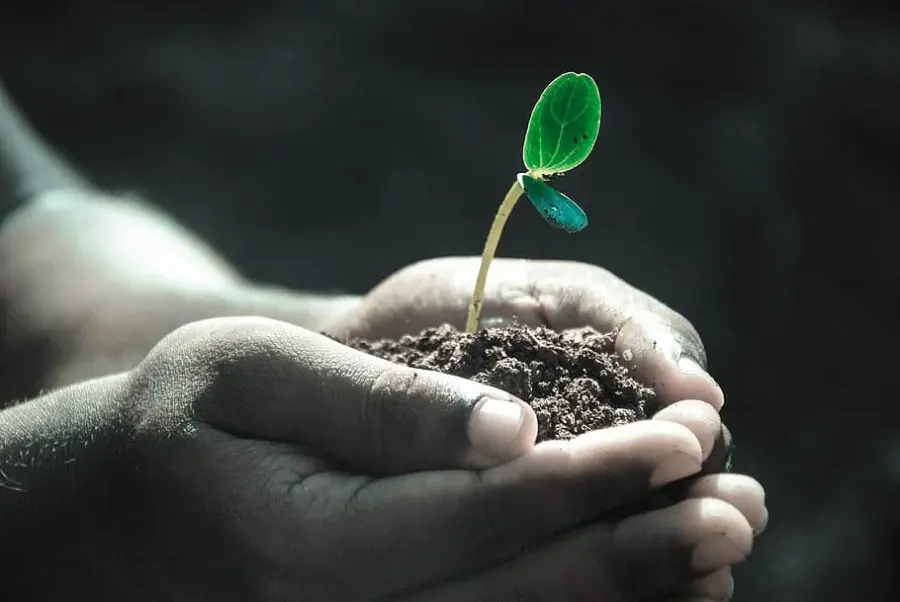
Diving into the relationship between climate change and agriculture is a bit like exploring the bond between sun and plants.
They’re deeply interconnected, influencing each other in myriad ways.
As our world warms up, farmers find themselves on the frontline, experiencing the brunt of shifting weather patterns and unpredictable seasons.
But here’s the twist: Agriculture isn’t just on the receiving end. With innovative and adaptive practices, it can play a starring role in mitigating the impacts of climate change.
As we venture into this section, let’s unravel the challenges and opportunities that lie at the crossroads of a changing climate and the age-old art of farming. Join us, won’t you?
Climate Risks to Crop and Livestock Production
The weather’s been acting a tad bit funky lately, hasn’t it? It’s not just you noticing.
From longer droughts to unexpected frost, the unpredictable moods of our climate are giving farmers worldwide some serious gray hairs. But what’s causing this?
Well, for crops, the risks are multifaceted. Increasing temperatures can reduce the duration of the growing season.
This means our favorite crops might not have enough time to mature fully, affecting yields.
Then there’s water, either too much or too little. While droughts can wilt and weaken plants, excessive rain can lead to root diseases and hinder plant growth.
Even pests are getting bolder with warmer climates, expanding to regions where they were once absent.
Now, for our livestock friends, the story’s a bit different but equally concerning.
High temperatures can lead to heat stress in animals, reducing their appetite, growth rates, and, in the case of cows, milk production.
Not to mention, warmer conditions can also increase the spread of livestock diseases.
Strategies for Climate Adaptation
But hey, farmers are a resilient bunch, always coming up with nifty solutions to nature’s curveballs.
When it comes to adapting to climate change, there’s no one-size-fits-all answer, but several strategies are lighting the way.
For starters, there’s a growing trend in selecting crop varieties that are drought or heat-resistant.
Think of them as the superheroes of the plant world, bravely withstanding the elements.
But it’s not just about the crops; it’s also about the soil.
By practicing conservation tillage and using cover crops, farmers can enhance soil health, which in turn, retains more water and reduces erosion.
On the livestock side, farmers are designing shelters that offer better ventilation and shade.
This helps in reducing heat stress for the animals. Additionally, by introducing diversified diets and selective breeding, livestock can be better equipped to face the challenges of a changing climate.
In a nutshell, while the challenges are vast, the spirit of adaptation and innovation in agriculture remains undeterred.
The relationship between farming and our changing climate is evolving, and with the right strategies, it’s a story of hope and resilience.
Agricultural Policy and Sustainability

Ever wonder how the decisions made in those big government buildings affect your local farms and the food on your plate?
Well, pull up a chair, and let’s chat. Agricultural policies play a massive role in shaping how our food is grown, and more importantly, how it aligns with sustainability goals.
From subsidies for certain crops to regulations that protect our environment, the bridge between the farm and the legislative chamber is closer than you might think.
In this section, we’re diving deep into the world of agricultural policy and its impact on sustainability. Buckle up—it’s going to be an enlightening ride!
Role of Government in Sustainable Farming
Isn’t it intriguing how the world of politics and policies often intertwine with our everyday lives, including what’s on our dinner plates?
Governments, both local and national, play a vital role in shaping the agriculture industry. Here’s how:
Setting the Scene with Regulations: Imagine a world where every farmer just did whatever they wanted. Chaos, right?
That’s where the government steps in. By setting standards and regulations, they ensure that farming practices are safe for both us consumers and our environment.
From deciding which pesticides can be used to setting safety standards for farmworkers, our governing bodies help maintain a certain order in the agricultural world.
Financial Support: Ever heard of agricultural subsidies? These are financial incentives provided to farmers to encourage specific types of farming.
Sometimes, these subsidies can push farmers towards more sustainable methods, like organic farming, that might be costlier but better for the planet.
Research & Development: This one’s a game-changer! Governments often fund research to discover innovative farming techniques.
The objective? To increase yield, reduce resource use, and ensure that our farming remains sustainable in the long run.
International Cooperation and Standards
As our world becomes more connected, farming isn’t just a local affair anymore. Let’s unpack the international side of things:
Trade Agreements: These aren’t just for economists in suits. When countries shake hands on trade agreements, they’re often agreeing on standards for agricultural products.
Think of it as countries promising each other, We’ll only sell you the good stuff, and you do the same for us.
Setting Global Standards: Organizations like the Food and Agriculture Organization (FAO) work tirelessly to set global benchmarks for sustainable farming.
These standards ensure that whether you’re enjoying a mango from India or coffee from Brazil, they’re grown under some basic sustainability standards.
Shared Knowledge: The beauty of international cooperation lies in shared knowledge.
Countries often exchange expertise, technologies, and innovative farming methods.
This collaboration ensures that the wheel isn’t being reinvented but improved upon globally.
Tackling Global Challenges Together: Be it the threat of a pest or adapting to climate change, many agricultural challenges are global.
International cooperation is all about joining forces, pooling resources, and addressing these shared threats with united vigor.
It’s like a global farming family where everyone’s looking out for one another, and together, they’re ensuring that the food on our plate is not only delicious but sustainably sourced. Cheers to that!
Sustainable Fishing Practices
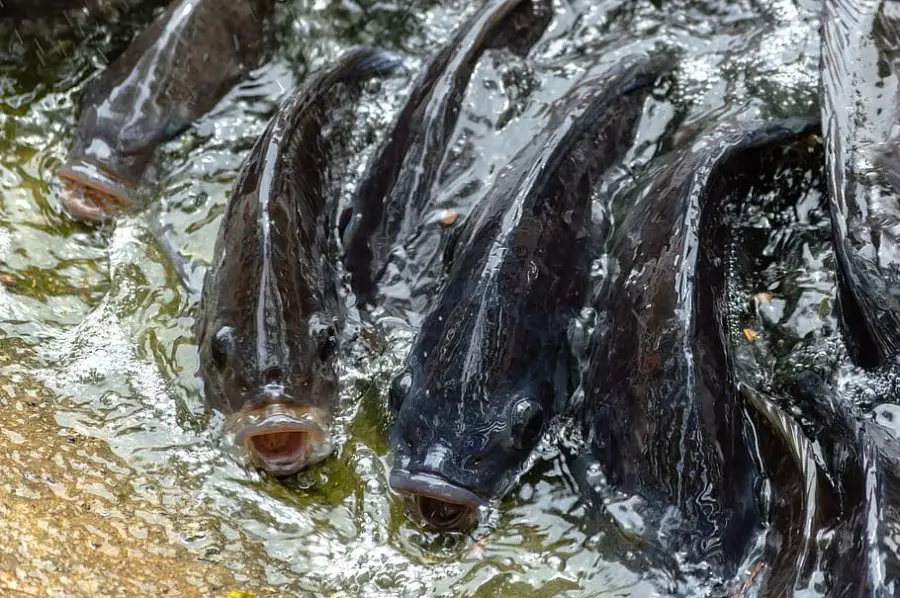
Imagine casting a line on a serene morning, hoping for a fresh catch for dinner.
Now, multiply that by millions, and you’ll get an idea of the global scale of fishing! But here’s the catch: our oceans are vast, yet vulnerable.
Dive with me into the world of sustainable fishing practices, where we explore how to reel in our seafood bounty without tipping the balance of our precious marine ecosystems.
Let’s set sail on this enlightening journey, shall we?
Responsible Aquaculture Techniques
Ah, aquaculture! Think of it like the farming of the seas (or freshwater locations, for that matter). When done right, it can be a game changer. Here’s why:
Balancing the Scales: Overfishing is a real concern. By farming fish, we can reduce the strain on wild fish populations.
But like any farm, the setup matters. Sustainable fish farms focus on mimicking the natural environment for fish, minimizing stress and promoting healthier growth.
Feed Management: Ever heard the saying, You are what you eat? The same goes for fish!
In sustainable aquaculture, the type of feed given to fish is of utmost importance.
It’s all about ensuring that the feed is nutritious, devoid of harmful chemicals, and sourced responsibly.
This not only makes the fish healthier but also ensures that what lands on our plate is top-notch.
Reducing Environmental Impact: Traditional fish farming sometimes gets a bad rap for polluting waterways with excess nutrients and waste.
But with modern techniques, we can recycle water, reduce waste, and even use fish farms as a way to clean and purify water. Cool, right?
Conservation of Wild Fish Populations
Navigating the vast oceans, we find our wild fish friends. And as much as we love our seafood platters and sushi rolls, it’s crucial to keep these populations thriving.
Catch Limits: Think of this as a budget for fishing.
By setting a limit on the number of fish that can be caught, we’re ensuring that fish populations have a chance to rebound and reproduce.
This way, there’s always a steady supply for the future.
Avoiding Bycatch: It’s like accidentally catching a boot when you’re fishing for trout.
Sometimes, unwanted or non-target species get caught in the net.
Sustainable fishing techniques work to reduce this bycatch, ensuring that only the intended fish are caught.
Marine Protected Areas: Picture this: certain sections of the ocean where fishing is limited or even prohibited.
These areas serve as safe havens for fish, allowing them to reproduce and thrive without the threat of being caught. It’s like giving fish a vacation!
Consumer Choice Matters: Ever seen those eco-labels on fish products? They’re not just for show!
By choosing seafood that’s certified as sustainably caught, you’re voting with your wallet and supporting practices that keep our oceans healthy.
So, next time you’re enjoying a seafood feast, take a moment to appreciate the journey of that fish from the deep blue to your plate.
And remember, each bite is a testament to the efforts put into sustainable fishing practices. Cheers to that!
Technology and Innovation in Agriculture

Ah, the marriage of age-old farming and cutting-edge tech! Dive into the realm of agriculture, but not as you’ve traditionally known it.
This chapter delves into how technology and innovation are sprucing things up on the farm front.
From drones buzzing overhead to smart watering systems beneath our feet, let’s embark on this tech-savvy journey and discover the future of farming in Technology and Innovation in Agriculture.
Buckle up, because it’s going to be a thrilling ride!
Digital Technology for Farm Management
Oh, how times have changed! Remember when farming used to be all about waking up at the crack of dawn, grabbing a hoe, and getting down and dirty in the fields?
While there’s still a touch of that rustic charm, digital technology is playing a growing role in reshaping the face of agriculture.
Imagine using an app on your phone to monitor soil moisture levels or predict the best day for planting.
Well, it’s no longer the stuff of imagination but a real-world reality. Digital technology now allows farmers to monitor, in real-time, every aspect of their farm.
We’ve got apps that alert farmers if a particular part of their field needs watering or drones that can scan large areas and provide detailed images of crop health.
And let’s not forget the cloud-based platforms which store vast amounts of data, helping farmers make informed decisions about planting, harvesting, and managing pests.
But wait, there’s more! With the rise of the Internet of Things (IoT), farmers can now have a network of interconnected devices right in their fields.
This means instant feedback, predictive analysis, and a level of precision farming we could only dream of a few decades ago.
Research and Development in Agriculture

When you think R&D, perhaps labs, white coats, and microscopes come to mind, right?
Well, in the world of agriculture, research and development is a bit more… down to earth, but just as exciting.
Agricultural R&D isn’t just about inventing new gadgets; it’s about pioneering techniques that could revolutionize how we grow food.
Take genetically modified organisms (GMOs), for instance. While they might be a topic of hot debate, there’s no denying the impact of R&D in developing crops that can resist pests or tolerate drought.
The real magic, however, often happens in collaborative spaces. Universities, independent research institutes, and even farmers themselves often come together to brainstorm, test, and refine new ideas.
From exploring the potential of vertical farming to finding organic alternatives for pest control, the quest for knowledge never stops.
Additionally, in today’s globalized world, R&D in agriculture isn’t confined to one place.
There’s a beautiful exchange of knowledge across borders, leading to innovations that benefit farmers everywhere.
Think of it as a global group effort, all working towards the same goal: a sustainable, efficient, and productive future for agriculture.
Financing and Economics of Sustainable Farming

Diving into the world of sustainable farming can feel a bit like stepping into a lush, green oasis.
But, just like any oasis, it’s not just about the plants and animals; there’s the hidden treasure of economics and financing that makes everything tick!
Sustainable farming isn’t just about being kind to Mother Earth—it’s also about creating a financially viable system that benefits farmers, consumers, and everyone in between. So, buckle up, folks!
We’re about to take a scenic ride through the money trails and economic strategies that underpin this green revolution.
Funding Opportunities for Farmers
Ah, the life of a farmer. Picture early mornings, the sun painting a golden hue over the fields, and a cup of coffee in hand.
But before a farmer gets to reap the fruits of their labor, there’s a financial journey to embark on.
Funding can seem like a tricky puzzle, especially for those diving into sustainable farming. There’s a world of opportunities out there.
From federal grants tailored specifically for eco-friendly agricultural practices to local community programs supporting green initiatives, there’s a buffet of options.
Farmers can look into low-interest loans for sustainable infrastructure improvements or even grants for organic certification.
And, let’s not forget about the various crowdfunding platforms where the community chips in to support a cause they believe in.
Plus, more and more consumers are willing to back farms that pledge to nurture the earth.
With a bit of research and some community networking, securing funds for sustainable farming ventures can be as fruitful as the farm’s harvest season.
Cost-Benefit Analysis of Sustainable Methods
Okay, let’s talk numbers. Shifting to sustainable farming might require some upfront investments, whether it’s in composting equipment, rainwater harvesting systems, or soil health improvement methods.
But here’s the thing: while there might be initial costs, the long-term benefits often outweigh these expenses.
Consider the savings: fewer chemical fertilizers and pesticides mean not only a reduction in those costs but also less soil and water pollution.
Healthier soils might require less irrigation (hello, reduced water bills!).
And with organic or sustainably-produced goods fetching higher prices in the market, there’s potential for increased revenue too.
Moreover, the less tangible benefits are just as compelling.
Healthier ecosystems mean fewer pest problems in the long run.
Plus, with the world facing unpredictable climate patterns, sustainable methods can offer more resilience against unexpected weather events.
So, if we were to map it out on a balance scale, while the initial expenses might tip the scale one way, the myriad benefits both financial and environmental often tip it back in favor of sustainable methods.
It’s like investing in a pair of good quality boots: might be pricier at the start, but they’ll last and serve you well for years.
Case Studies: Successful Sustainable Agriculture Models

Dive into the world of farming with me for a moment, won’t you? Imagine fields that seem to stretch endlessly, teeming with life and bursting with color.
Or urban rooftops transformed into green oases amidst the cityscape. These aren’t just figments of imagination but real stories of success.
In our exploration of Case Studies: Successful Sustainable Agriculture Models, we’re about to embark on a global tour, spotlighting farmers and communities that have cracked the code.
From age-old techniques refined over generations to innovative methods borne out of modern challenges, there’s a world of inspiration awaiting.
So, grab your virtual passport and let’s journey through these remarkable tales of green triumph!
Examination of Successful Models
Let’s start our journey by visiting some standout models in sustainable agriculture.
Picture this: a small farm nestled in the heart of Kenya, where community members have embraced agroforestry, integrating trees and shrubs with their crops.
This not only enhances biodiversity but also significantly reduces soil erosion.
Then, there’s the picturesque rice terraces of Bali. The Subak system, a community-managed irrigation method, ensures every drop of water is used efficiently.
Heading over to South America, we find farms harnessing the power of natural predators to keep pests in check, reducing the need for chemicals.
Each of these models is a testament to the ingenuity of farmers and the resilience of nature.
Lessons Learned and Recommendations
As we’ve seen, there’s no one-size-fits-all approach to sustainable farming.
Each region, with its unique challenges and advantages, crafts its own methods.
However, some universal truths emerge. Community involvement is paramount; when everyone pitches in and shares knowledge, success is inevitable.
Embracing nature, rather than fighting against it, often yields the best results.
And perhaps most importantly, adaptability is key. As climate patterns shift and new challenges arise, the ability to pivot and evolve becomes crucial.
If you’re pondering about diving into sustainable farming or simply wish to integrate some of these methods into your gardening, here are a few takeaways.
Start small and observe the natural rhythms and patterns in your environment.
Collaboration is gold; connect with local farming communities or forums online.
And always remember, every tiny effort contributes to a larger positive impact on our planet.
Let the success stories inspire you, and who knows? Maybe someday, your sustainable farming story will inspire others!
The Future of Sustainable Agriculture
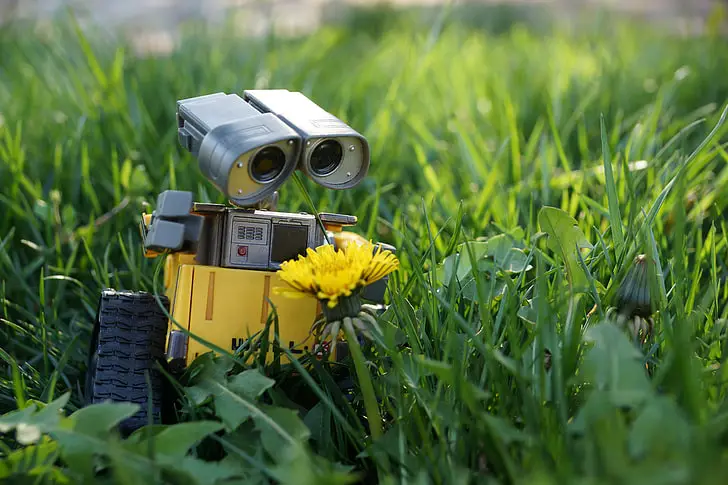
Stepping into the future, we’re about to embark on a fascinating journey where sustainable agriculture isn’t just a choice, but a necessity.
Imagine fields and farms buzzing with innovations, community collaborations, and age-old wisdom combined.
But what exactly lies ahead for sustainable farming, and how will it shape our world?
Come along as we delve into the evolving trends, promising technologies, and heartening stories that will define the future of sustainable agriculture.
It’s a path paved with challenges, but the vision of a greener and more resilient food system keeps us marching forward. Let’s explore!
Future Challenges and Opportunities
In every growth story, there’s always a mix of hurdles and high points. Let’s first chat about the challenges that sustainable agriculture might face as we move forward:
Shifting Climate Patterns: With unpredictable weather events becoming more common, farmers need to brace for more frequent droughts, floods, and changing precipitation patterns. This isn’t just a farming challenge; it’s a global concern.
Land Degradation: With expanding urban areas, quality farmlands are getting scarce. Plus, soil erosion and degradation present continuous challenges to maintain soil fertility.
Economic Barriers: Transitioning to sustainable methods might require upfront investments, and not all farmers have access to the necessary resources.
But it’s not all gloomy! The opportunities are vast:
Technological Innovations: Imagine drones monitoring crop health, precision agriculture tailoring the care each plant receives, or even apps connecting farmers directly to consumers.
Educational Platforms: With more institutions offering courses on sustainable farming, a new generation of informed farmers is on the rise.
Collaborative Communities: Farmer collectives and community-supported agriculture are making waves, enabling shared resources and knowledge.
Roadmap for a Sustainable Agricultural Future
Navigating the landscape of sustainable agriculture requires a clear roadmap. Here’s how we envision a thriving agricultural future:
Investing in Research: Continued research into plant genetics, soil health, and organic farming practices can unlock new ways to enhance crop yields without harming the environment.
Policy Frameworks: Governments around the world need to prioritize policies that support sustainable farming, offering subsidies, grants, or tax breaks to incentivize the shift.
Engaging the Youth: Getting the younger generation involved and excited about farming can inject fresh energy and innovative thinking into the sector.
Localizing Food Systems: By focusing on local production and consumption, we reduce the carbon footprint of transporting foods while supporting local economies.
Building Resilience: Planning for potential setbacks – be it climate change or economic downturns – will be crucial. Resilience can be built through diversifying crops, practicing intercropping, and embracing agroecological principles.
The future of sustainable agriculture isn’t a set destination; it’s a journey.
But with a roadmap in hand and a community by our side, we’re set to make incredible strides in creating a food system that’s kinder to our planet and its inhabitants.
Conclusion

As we’ve journeyed through the vast terrains of sustainable agriculture, it’s clear how this isn’t just a trend, but a necessity.
It’s been a delightful ride, diving deep into every facet of this field, and now, as we wrap up our exploration, let’s pause to reflect on some of the standout takeaways and the promising road ahead.
The Big Picture: Reflecting on Our Journey
From understanding the nuances of soil health to the innovations shaping the future, our journey through sustainable agriculture has been enlightening.
It’s evident that the path forward requires a blend of age-old wisdom and cutting-edge technology.
And while challenges loom, the dedication of countless farmers, researchers, and innovators gives us hope.
Embracing a Greener Tomorrow
The shift towards sustainable agriculture is not merely an environmental endeavor it’s a movement that promises better health, robust economies, and strengthened communities.
As consumers, policymakers, and global citizens, our role is pivotal.
By supporting sustainable practices and making informed choices, we’re not just securing our food’s future but ensuring that our planet remains lush and lively for generations to come.
Learn how kelp farming is a rapidly growing sustainable form of agriculture

